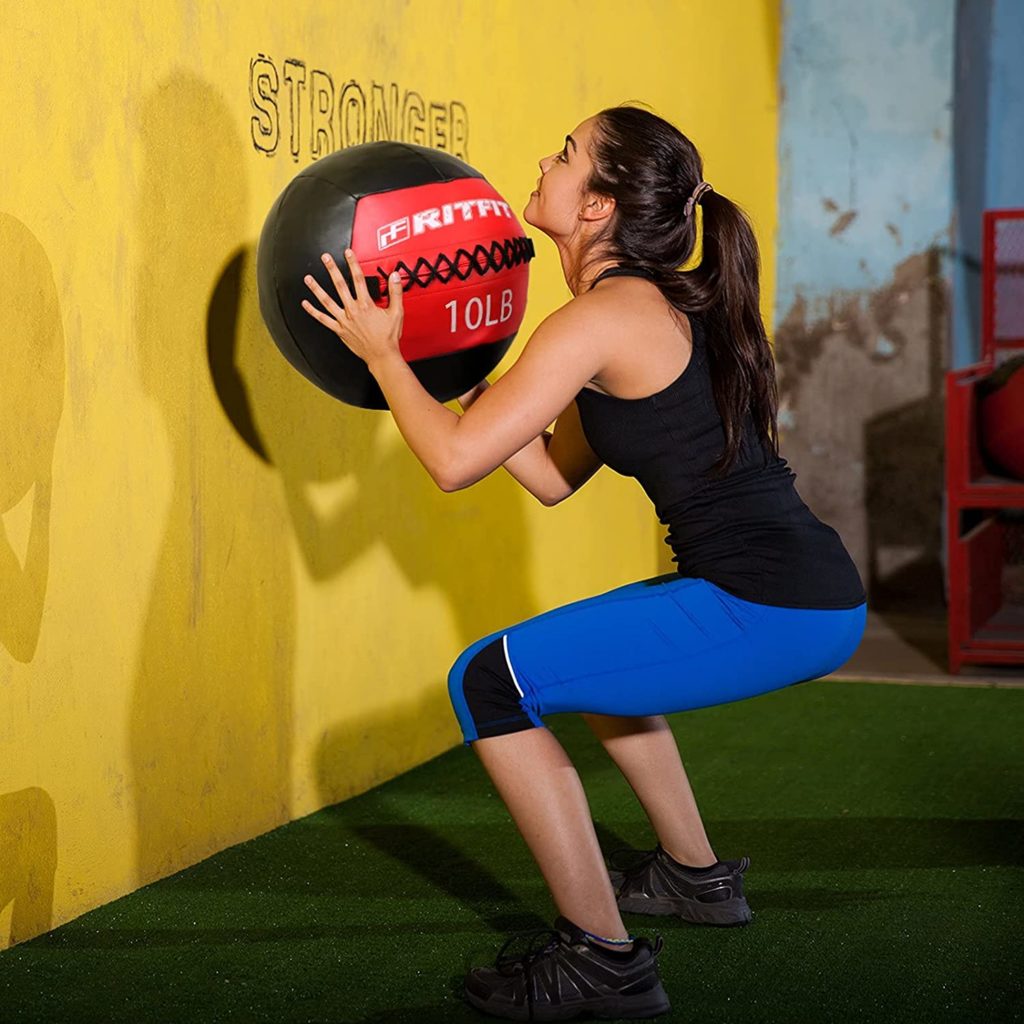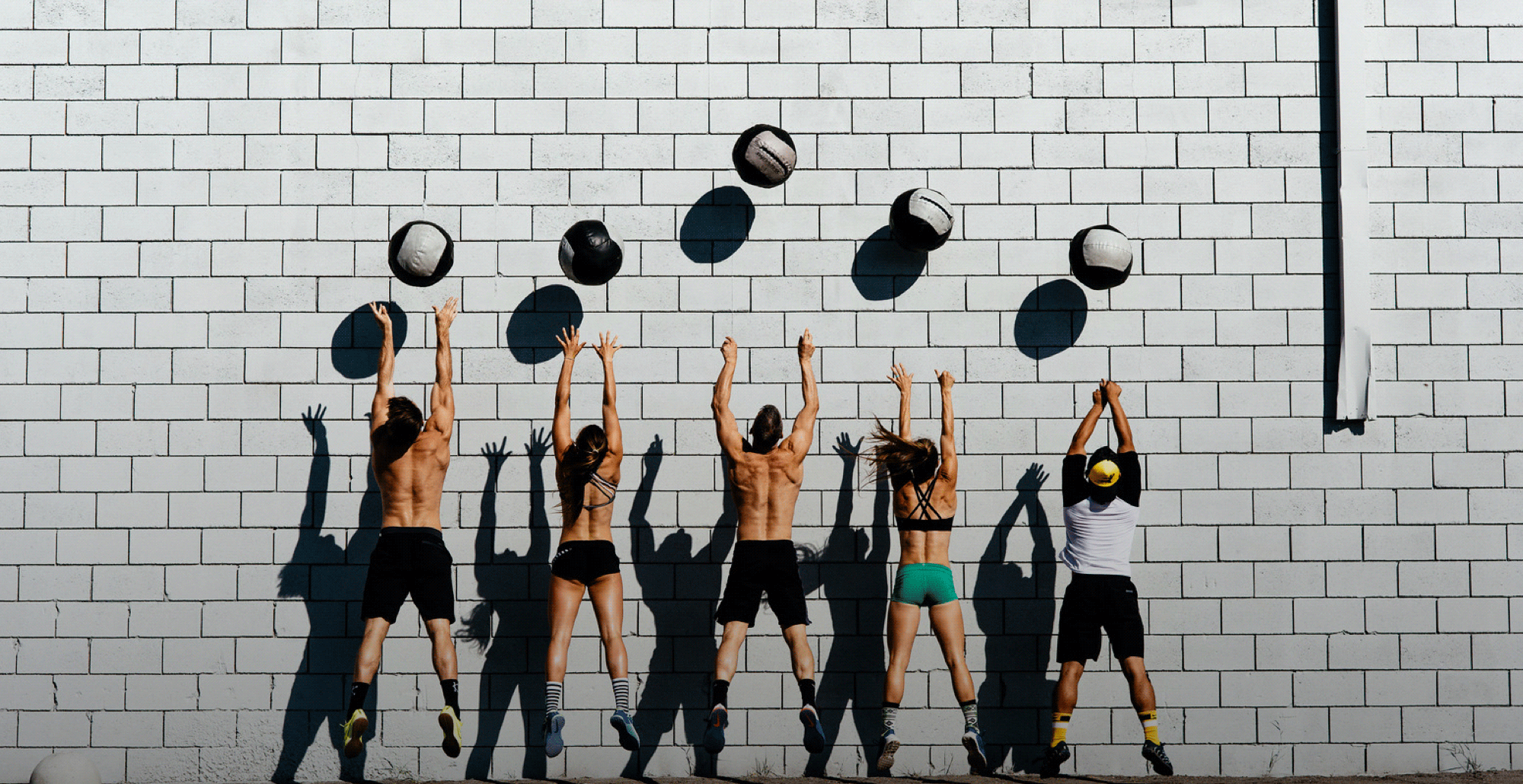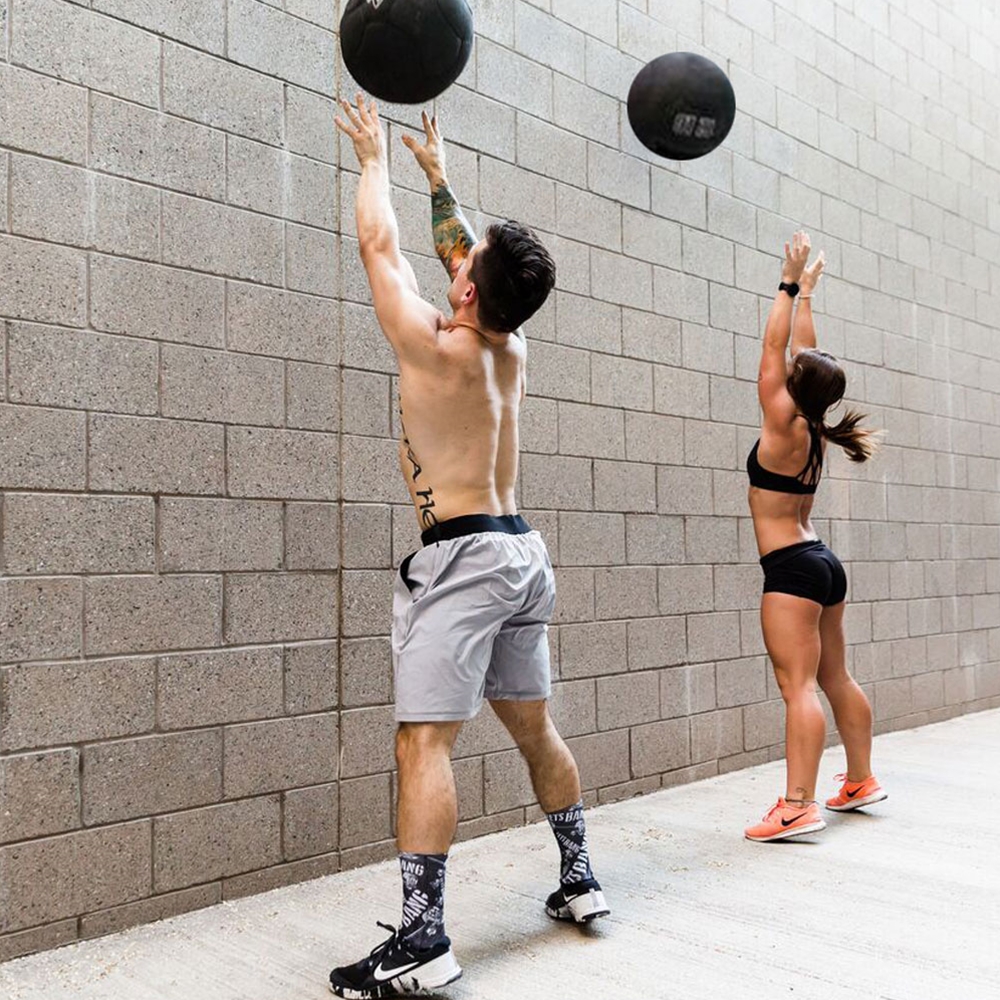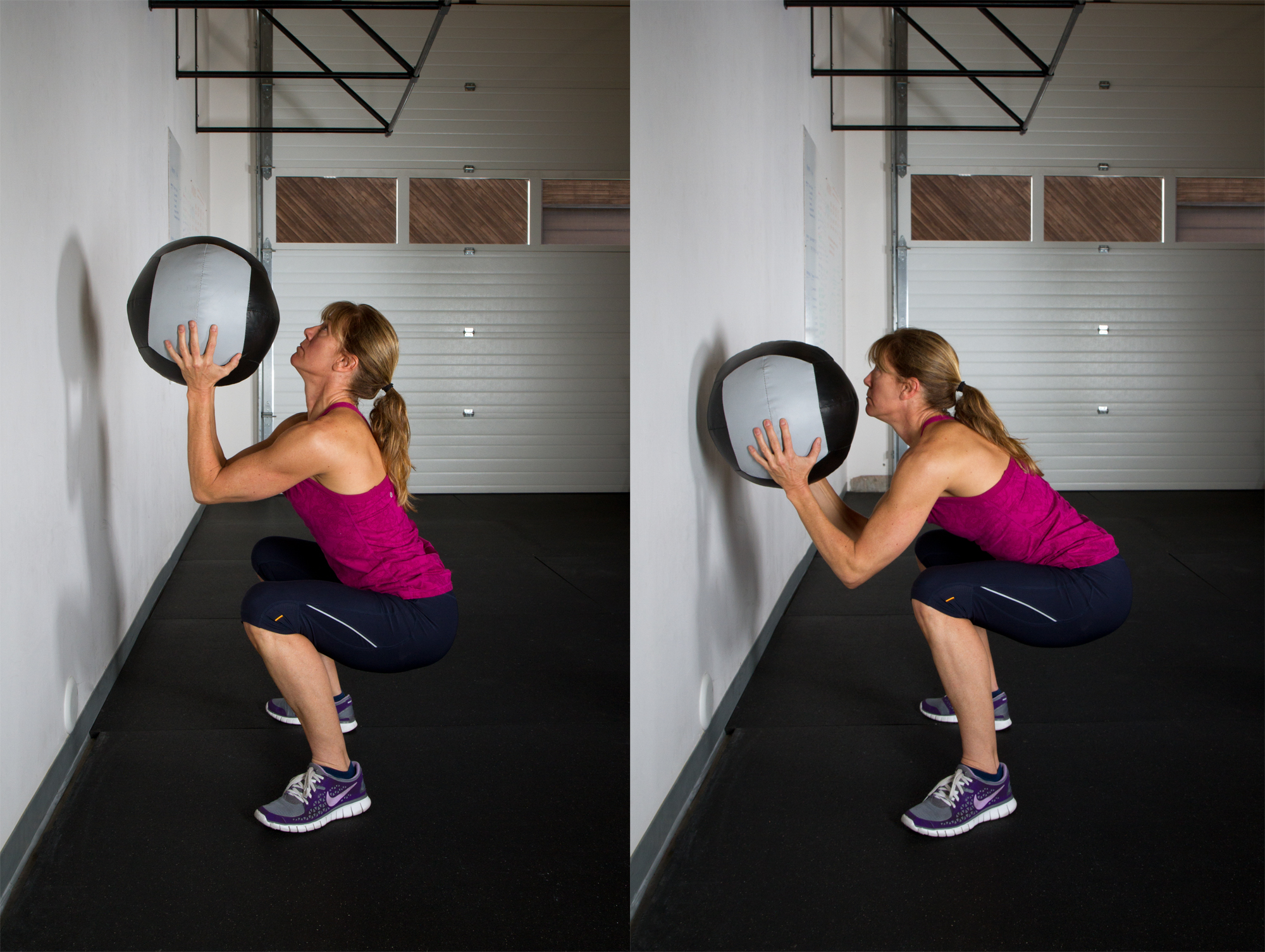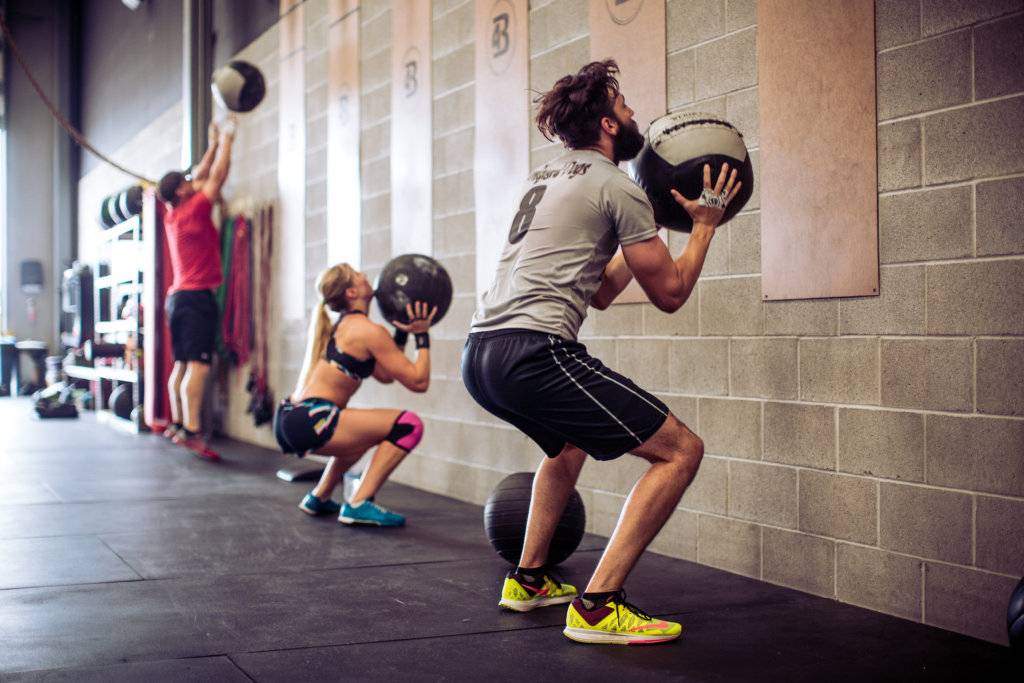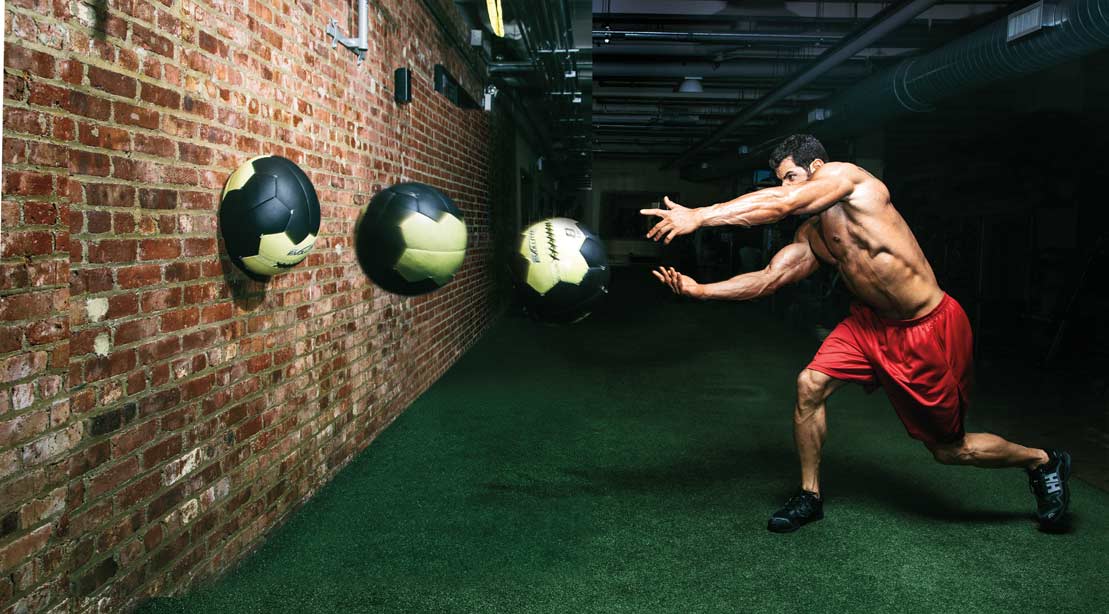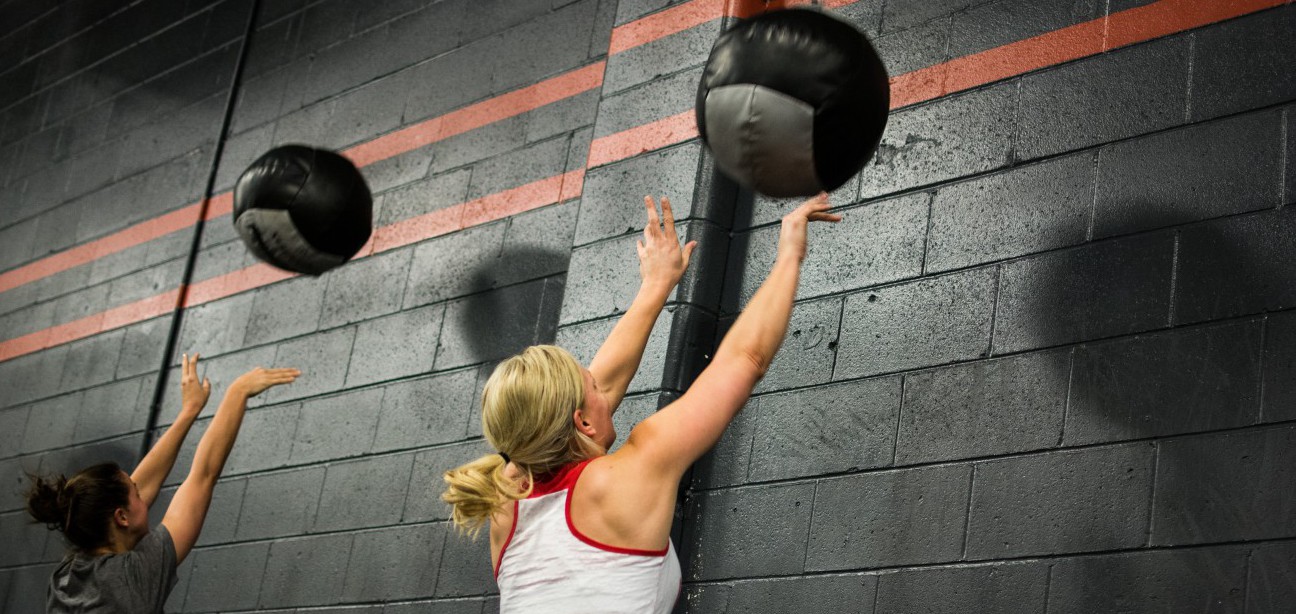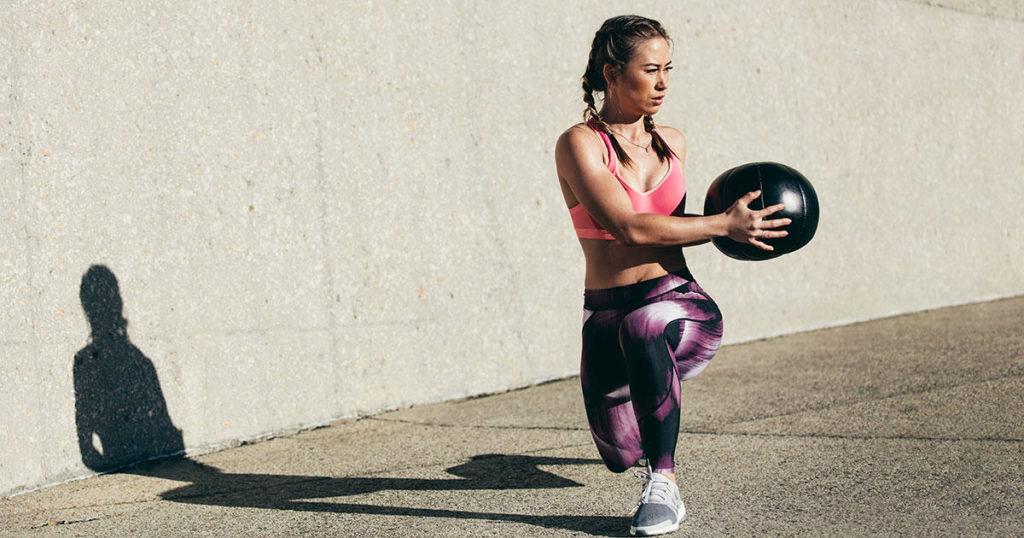Wall ball exercises can be considered universal, as it benefits everyone. But what if there is no necessary equipment nearby?
What is a wall ball exercise in CrossFit?
CrossFit wall balls were first talked about at the beginning of the 21st century. The founder is Greg Glassman, who came up with the idea to create a training program based on the saying “jack of all trades, master of nothing”.
He was a teenager doing gymnastics when he realized that training with extra weight for all muscle groups was much more effective than using only body weight. This principle is reflected in CrossFit, the goal of which is general physical preparedness.
Why is a wall ball exercise important?
CrossFit is a versatile form of fitness. But not everyone likes such exercises. One of the least favorite CrossFit exercises for most enthusiasts is throwing wall balls.
The wall throw is a challenging, high-intensity exercise that engages a large number of muscles in your body. It works the same muscles as the quads, glutes, hamstrings, back, chest, shoulders, biceps, triceps, and core muscles.
The moves require your lower body muscles to do the squat while your upper body does the push-push part as you throw the ball against the wall.
When starting this exercise, you should first use lighter wall balls, and then move on to heavier ones.
Focus is also an important factor. The repetition is that the hips are below parallel, and the wall ball reaches a given height. These exercises are especially difficult for people with stiff calves, tight hips, and limited ankle mobility.
If you have a problem that makes wall throws difficult for you, you should consider replacing it with one of these exercises.
Can you do a wall ball without a wall?
Wall balls are the main attributes of CrossFit and other fitness workouts. You may find yourself in a situation where there is no necessary equipment nearby: a wall ball or something to throw it at.
In fact, do not despair, substitutes exist. In this article, we will explain what is considered a good substitute for a wall ball, and consider how to correctly perform each of the alternatives.
As for functional fitness workouts, these include:
- Thruster (dumbbell, barbell, kettlebell);
- Standing medicine ball chest (slam, chest throw, cleans);
- Landmine squat;
- Press.
We will also pay attention to alternatives without weight.
Wall ball substitute: criteria
To determine the quality of a substitute wall ball, you should adhere to the following criteria:
- Work with the same muscle groups;
- Challenge your cardiovascular system and coordination;
- Don’t forget the movement pattern, don’t change it;
- Develop strength and explosive power.
Next, consider each in more detail.
Muscle groups
Wall ball exercise works almost every muscle in your body. Firstly, the following muscle groups begin to work:
- Quads;
- Hamstrings;
- Glutes;
- Shoulders, pecs, triceps;
- Core.
Consider what each muscle group is responsible for. So, quads are responsible for extending the knees and straightening the legs as you rise from the bottom of the squat.
Hamstrings help with hip extension and also stabilize the knee.
Glutes are responsible for hip extension when you assume a standing position.
Shoulders, pecs, and triceps are activated when the ball is thrown into the wall. The shoulders and pecs help push the ball off the wall, and the triceps help keep the arms straight.
Your core is also involved in wall balls. It helps you stay upright when you assume a squat position while holding the wall ball against your chest level and prevents your body from twisting too much while moving.
For a good wall ball substitute, you don’t have to look for something that will work all of the same muscle group. The wall-ball substitute should target at least some of them.
Cardiovascular system and coordination
Since the movements are explosive, they are often performed with a high number of repetitions: at least ten per set.
In other words, wall ball exercise challenges your cardiovascular system. To accomplish them, you need to develop endurance in yourself.
Wall balls also test your reaction, coordination, and accuracy.
This is because you will regularly have to react quickly if the ball falls faster than you expect. Also, the wall ball may fall at the wrong angle. Getting the right reps takes effort.
So, a wall ball substitute should boost your heart rate, help improve your overall performance and test your ability to react quickly when you’re tired.
Don’t forget about the similar movement pattern
To practice with wall balls, you need to fully squat while holding the wall ball to your chest. Only then, you do need to throw it as high as possible. The standard for most CrossFit workouts is a 9-foot target for women and a 10-foot target for men.
If replacing a wall ball doesn’t require you the throwing portion, you should include the moves on the cards. That is, not you, but your replacement, of course. With the replacement, you should also be pushing the weight over your head as you lift.
Explosiveness
Wall balls will help you develop explosive power. In these exercises, you must use both your upper and lower body to throw the wall ball as hard as you can to hit the target. You can’t hit a target without throwing effort.
That is, a good substitute for a wall ball should be dynamic and require you to repeat.
What can I use if I don’t have a medicine ball?
Check out the Thruster dumbbells. Exercises with dumbbells will be a great replacement for a wall ball. They mimic the actions of squatting motion and pushing weights overhead in a fluid motion. Just like you do with the ball.
Thruster dumbbells substitute
Let’s view exercises that you can perform that will work for the same muscle groups even if you don’t have access to a medicine ball. With such a substitute, you can train at home or in rooms with a low ceiling. Or if you don’t have much space.
To use this substitute, you need:
- Put your feet shoulder-width apart and hold the dumbbell with the heads at your chest.
- Next, squat down as low as you can (ideally, your hips should be below your knees).
- Quickly come to a standing position while pushing the dumbbell over your head in one smooth motion.
- Bend your elbows to lower the weight. As soon as the head is about the same level, start a squatting motion without a pause.
- Make as many repetitions as possible.
Thruster dumbbell tip
When doing the push with one dumbbell, it should be heavier than the ball you normally use. So, for example, if you’re used to using a 10-pound wall ball, the dumbbell should be at least over 15 pounds (ca. 7 kg).
This is because you are not tossing the weight to a certain height, and you don’t have to use as much force to push it over your head. You also control the lowering of the dumbbell. Using a heavier dumbbell compensates for these shortcomings.
Using the barbell thruster
Barbell thrusters are similar to dumbbell thrusters, except you use a barbell.
This wall ball replacement has the same drawbacks as the previous one. That is, there is no need to throw a weight into the air.
However, barbell thrusters require more power, stability, and training to perform effectively.
For this wall ball exercise, you need:
- Stand with your feet shoulder-width apart and hold the barbell in a front rack position (hold it in front of you so that it rests on your deltoid muscles and your elbows are raised as high as possible).
- Then assume a squat position and move down until the hip joint is below the knees.
- You need to get up as fast as you can. When you get up, don’t stop: push your chin back and push the bar over your head until your arms are fully extended.
- Lower the weight by bending your elbows and squatting down as soon as the weight is back on your shoulders. Don’t stop before returning to the starting position.
- Make as many repetitions as possible.
Barbell thruster tip
At the top of the thruster, it is better to make short pauses. When doing exercises with a wall ball, many athletes make circular motions with their arms to shake their shoulders while waiting for the wall ball to come down again. But many people prefer to keep their hands above their heads until they catch the wall ball and crouch back.
If you keep your arms up, pausing at the top of the thruster will mimic the action of holding your arms in the air after throwing the ball into a wall. By keeping your arms raised up, that is, holding the weight, you will be able to increase the endurance and stability of the shoulder.
Kettlebell thruster instead of wall ball exercise
It is considered an ideal wall ball substitute. Like dumbbell thrusters, there are two ways to do it: either you.
Hold the kettlebell against your chest height with both hands, or hold a kettlebell in each hand.
If your physical training allows you, we recommend doing thrusters with two kettlebells.
Kettlebells are such a fantastic training tool because the body weight will not be balanced, which means your stability and coordination will be challenged.
This result can be lost if you hold on to one kettlebell with both hands. Therefore, doing thrusters with two kettlebells will allow you to train your shoulders and posture in addition to the strength and cardiovascular benefits that wall balls offer.
So, you need:
- Stand with your feet shoulder-width apart and hold two kettlebells on your shoulders or one kettlebell on your chest.
- Next, begin to squat until you are below parallel.
- Stand up as abruptly as you can and push the weight over your head without pause.
- Lower the weight and start lowering back into the squat.
- Repeat the wall ball exercise.
Kettlebell tip
However, you have to be careful with thrusters. They can cause bruising on your forearms due to the weight of the kettlebell being concentrated on your arms.
The more sets you do, the faster you and your body will get used to it, but there are things you can do to prevent this from happening.
For example, keeping your wrists straight when your arms are raised above your head will help prevent bruising on your arms without putting too much pressure on the lean part of your body. Or hold the kettlebell by the curve of the handle, not in the middle.
This will give you better control of the kettlebell, and it won’t hit your forearms when you lift the weight over your head.
How do you make wall balls at home?
Medicine ball hits are an explosive move that requires you to throw the wall ball to the ground instead of directly overhead. Such exercises improve the core, back, and shoulders. But the force also needs to be directed to the legs.
Standing medicine ball chest
So, it’s also a great coordination wall-ball exercise, as you’ll be doing the reps in quick succession.
To perform medicine ball hits, you need:
- Spread your feet shoulder-width apart and hold the medicine ball against your chest height.
- Raise your hands, standing on your toes. You need to raise the medicine ball above your head.
- Push the medicine ball hard down to drop it to the ground. Lean your hips back slightly towards the wall behind you (pay attention to the bounce as the ball can bounce high off the ground).
- Start your next rep by lifting the medicine ball over your head in one smooth motion before throwing it again.
There are various ways to make this exercise even harder on the cardiovascular system. For example, you can add a burpee at the end.
After you drop the wall ball down, bend over and place your hands on the ball. Kick both legs back at the same time to get into a push-up position, then jump back with your legs. When lifting, lift the wall ball with you. Raise your arms above your head in a fluid motion, then hit the ball and repeat.
If you decide to use this option, use a slam ball.
Slam balls have a harder rubber shell, but at the same time, they are more flexible and shock-absorbing.
This means that they will not bounce as well as medicine balls. So, you don’t have to worry about the ball bouncing towards you when you lean over to burpee.
Medicine ball throws from the chest
Throwing a medicine ball doesn’t require squatting, but it’s a great wallball substitute. You can also do it but in a sitting position.
Yes, you won’t throw a medicine ball up like you would with a medicine ball. In any case, you will have to throw it at the wall with all possible force.
You will also still be using your chest and shoulders to throw the weight hard against the wall. The upper top will also be trained, this will help to cope with large volumes.
How to use:
- Stand about 2-3 feet from a wall with your feet hip- and shoulder-width apart. Bend your knees slightly.
- Hold a medicine ball against your chest.
- Thrust the medicine ball away from you and throw it against the wall with all your might. Then catch the wall ball.
- Repeat in quick succession, or pause for a second between throws.
You can also intensify the exercise. For example, stand perpendicular to a wall and throw the ball to the side instead of straight ahead.
This variation can help improve your core’s anti-rotation strength. It also improves the stability of your core when doing squats and heavy exercises.
Medicine ball cleans
Medicine ball cleans does not require you to lift weights over your head. But it still helps you build muscular endurance in the same muscles that wallball uses, including the quads and shoulders.
Also, this procedure is configured for a large number of repetitions. They will help improve performance when performing approaches with a large number of repetitions.
Also, the medicine ball clean is a good wall ball alternative for sore knees because you can perform a powerful clean instead of a full clean. This means that you only go into a partial squat when you “catch” the wall ball, not when you squat all the way.
So:
- Place the medicine ball on the floor and stand slightly behind it with your feet shoulder-width apart.
- Kick both legs back at the same time to get into a push-up position and with a straight back, bend over to pick up the medicine ball.
- Once you are in a standing position, lift your shoulders and bend your elbows.
- Release the medicine ball without tossing it up or spinning it in the air.
- When you catch the ball again, crouch as deep as you can.
- Stand up, holding the ball in front of your chest.
- Gently touch the medicine ball to the floor and repeat the wall ball exercise.
All the methods described have one drawback – you use only the upper body. And the hips also play a big role. You must use them to transfer power.
You also need to make sure the medicine ball stays close to your body. Furthermore, you must not let your hips thrust your arms too far forward. This may result in you having to jump forward to meet the ball. This can lead to a loss of balance.
What can I use in place of wall balls?
You can also try landmine squat and press. These are the perfect, good wall ball alternative for people with shoulder problems. You will be pushing the weight up and slightly in front of you rather than directly over your head, so your shoulders will be in a more comfortable position at the top of the movement.
- Insert one end of the rod into the landmine attachment or wedge it into the corner of the wall.
- Load the desired weight on the other end.
- With an underhand grip, lift the weight off the floor and bring it up to your chest. Carefully adjust your grip so that both hands grip the sleeve of the barbell.
- Squat until you are below parallel.
- Stand up and at the same time sharply lift the weight up.
- Lower the weight as you return to the squat before returning to the starting position.
- Do the required number of repetitions.
For a more challenging exercise, try the shoulder-to-shoulder landmine thruster. Start by holding the weight on one side, while lifting, squatting, and pushing the weight up and down from one shoulder to the other.
Performing such exercises requires you to move quickly. Squat and stand up as fast as you can.
Summing up: what can I use if I don’t have a medicine ball?
So, if you’re injured or don’t have enough room to practice with the wall ball exercise, there are plenty of alternatives. And of course, they work the same muscles as the CrossFit wall ball exercise, they make a great alternative.
The main thing to remember is that a good alternative trains the cardiovascular system, as well as the quadriceps, hamstrings, glutes, pecs, triceps, and core.
A good substitute also tests your coordination, and your ability to perform explosive moves under fatigued conditions.
Whichever option you choose, you should also make sure that you can perform this movement for at least 10 reps to improve your overall performance.

